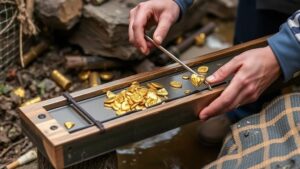Offering Educational Specimens to Schools and Museums for Income
Offering Educational Specimens to Schools and Museums for Income
In an increasingly digital age, physical educational materials such as specimens, artifacts, and models remain essential in fostering hands-on learning experiences. Schools and museums often lack the resources to procure such items, creating a unique opportunity for individuals and organizations to offer these educational specimens for sale or rental. This article explores the potential for generating income through the sale of educational specimens, highlighting best practices and real-world examples.
The Educational Value of Specimens
Educational specimens, ranging from biological specimens to geological samples, play a critical role in hands-on education. facilitate experiential learning, allowing students to interact directly with the subject matter. For example, a preserved specimen of a frog can help biology students understand anatomy in a way that text cannot convey. The use of specimens enhances retention and can even improve student performance–as evidenced by studies showing that tactile learning can boost understanding by as much as 75% compared to traditional learning methods.
Target Markets
There are several viable markets for educational specimens, each with distinct needs and requirements:
- Public Schools: Many educational institutions aim to provide a comprehensive curriculum, but budget constraints often limit their ability to acquire quality specimens.
- Private Schools: These institutions often focus on enhanced educational experiences and are willing to invest more in unique learning materials.
- Museums: Museums require high-quality specimens for exhibits, educational programs, and workshops, making them a lucrative market.
- Educational Institutions: Colleges and universities may need specific specimens for advanced studies and research.
Types of Educational Specimens
When considering which types of specimens to offer, its crucial to align your offerings with the educational goals of your target audience. Common types include:
- Biological Specimens: Preserved animals, insects, and plants are widely used in biology and environmental science curricula.
- Geological Samples: Rocks, minerals, and fossils can be essential in geology and earth science education.
- Historical Artifacts: Items related to historical events or cultures can enhance history lessons in schools and museums.
Building a Business Model
Creating a business around offering educational specimens involves several key steps:
- Research: Identify the specific needs of your target market and the types of specimens that would be most beneficial. Conduct surveys or engage directly with educators and museum professionals.
- Acquisition: Secure quality specimens, ensuring that all legal and ethical considerations are addressed. For example, acquiring specimens from legitimate sources demonstrates credibility and can build trust with clients.
- Marketing: Promote your offerings through targeted advertising, social media platforms, and partnerships with educational organizations. Establishing relationships with local schools and museum networks can lead to increased visibility.
Legal and Ethical Considerations
Prior to offering specimens, it is crucial to navigate legal and ethical considerations. This includes compliance with regulations regarding the collection and sale of biological specimens, such as the Convention on International Trade in Endangered Species (CITES) for items that may be protected. Ethical sourcing is also paramount; ensure transparency in your procurement processes to maintain credibility among educators and institutions.
Case Study: EcoSpecimens
EcoSpecimens is an organization that specializes in providing sustainable biological specimens to schools and museums. By focusing on ethically sourced items and educational kits that align with academic standards, they have successfully built a robust client base among educational institutions. Their model is designed to be both environmentally and financially sustainable. They report a revenue increase of 40% annually as schools increasingly recognize the value of hands-on learning tools.
Conclusion and Actionable Takeaways
Offering educational specimens to schools and museums can serve as a viable income stream while contributing to the enhancement of educational experiences. By understanding the needs of target markets, carefully selecting specimen types, and maintaining legal and ethical integrity, it is possible to build a sustainable business in this niche.
In summary, the key actions to consider are:
- Conduct thorough market research to determine the needs of educational institutions.
- Ensure all specimens are ethically sourced and legally compliant.
- Use targeted marketing strategies to reach potential clients.
- Build relationships within the education and museum communities to expand your reach.
By following these guidelines, individuals and organizations can successfully offer educational specimens while contributing positively to the field of education.

